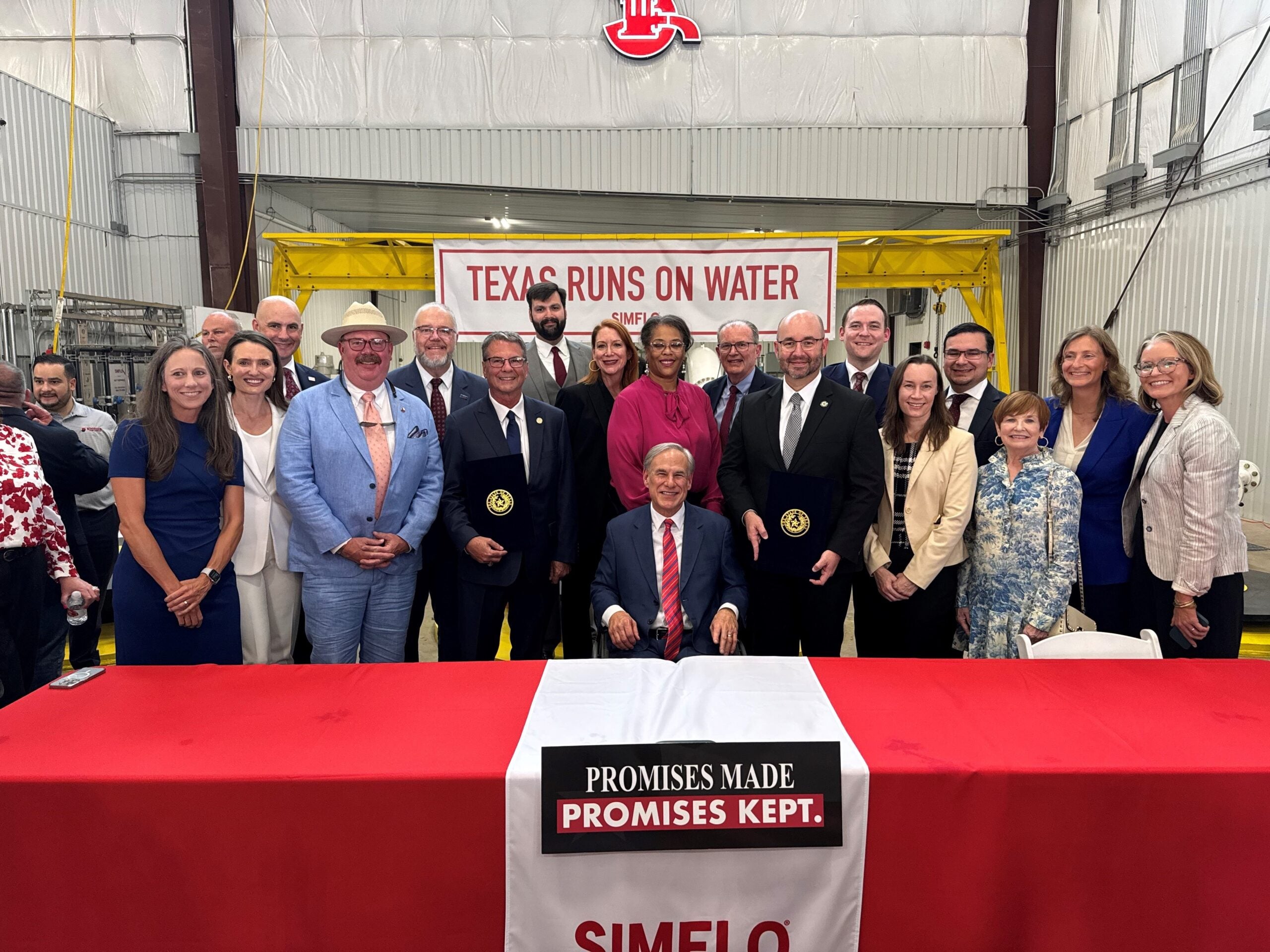
EDF’s Vanessa Puig-Williams (far right) joins Texas Gov. Greg Abbott (center) and other water stakeholders at a signing ceremony for a $20 billion, 20-year package to fund water projects.
As federal environmental programs and funding come under attack, states across the West are adopting major policies and dedicating more money to support long-term water resilience, underscoring how water bridges political divides. Here’s a roundup of the actions that were strongly supported by the EDF Water Team.
Texas goes big on water with $20 billion package
Alongside a large coalition of stakeholders, EDF supported and helped to shape a $20 billion, 20-year ($1 billion per year) funding package that will support water supply development and infrastructure repairs, including aquifer storage and recovery projects, agricultural water efficiency projects, and wastewater reuse. The package, signed by the governor in a ceremonyWednesday, is the first-ever investment in water of this magnitude in Texas. It will go to voters for final approval as a constitutional amendment on the November ballot.











